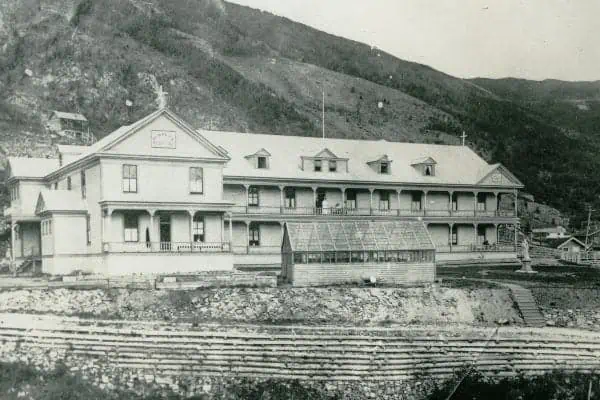Dawson City blooms in the summer. It’s a process that begins in some local commercial greenhouses and explodes after the horticultural booths at the Gold Show during Victoria Day Weekend in May. It then continues unabated as part of the Farmers’ Market during the summer, and employs several landscaping and gardening firms during the same period.
Standout gardens include the floral displays at the Commissioner’s Residence, which Parks Canada and some contractors have to struggle to bring into bloom in time for the annual Commissioner’s Tea on the weekend nearest to June 13.
Victory Gardens, located just north of the Dawson City Museum, has been a scenic spot for generations. The residents of the old McDonald Lodge, on Fifth Avenue, used to have a good view from their front porch. The new lodge is on the other side of the park, but has been designed so that there is still good viewing from a covered deck.
There are other sites I could mention, but this week I want to focus on one of the stranger and more prominent gardens. Officially known as Mary Hanulik Garden, this one is found on the west side of Front Street, just south of the Commissioner’s Residence, and wasn’t originally intended as a garden at all.
These days it is festooned with flowers, bushes and small trees, and plaques bolted to two boulders on the dyke end of the narrow road leading up the street celebrate the lives of George Mercer Dawson, Joseph Francis Ladue and L.N. “Jack” McQuesten, three individuals who loom large in Klondike lore.
‘Twas not always thus.
The force main from Dawson’s sewage system meets a buried cistern at the top of the hill on which the garden sits. The cistern fills up to a certain point and then triggers a discharge of effluent down to the outflow pipe that opens into the fastest part of the Yukon River’s current. When the dyke was being built there needed to be an access road so that city workers could service the cistern, so a lane just big enough to allow the passage of a pickup truck was added.
In the late 1980s, when the dyke was new, the cistern could be quite pungent, and Norm’s Hump, as it was generally known (the Super of Public Works is Norm Carlson) was far from being a landmark.
Since it was so prominent, it was decided to dress it up a bit. I don’t know if part of the plan might have been to kill the odour, but it seems to have worked out that way. First came the flowers and foliage, followed by the first generation of benches (since replaced with spiffy new designs by Jim Williams), then the boulders and eventually the three plaques.
These days, after further landscaping to create a real Waterfront Park, this lane is the natural end of a short walk that might begin at the SS Keno and wend its way past the gazebo and the town clock.
Although the garden did acquire a more upscale name over the years, in memory of a woman whose flower gardens were legendary during her life, I’m afraid lots of locals still call it Norm’s Hump.




